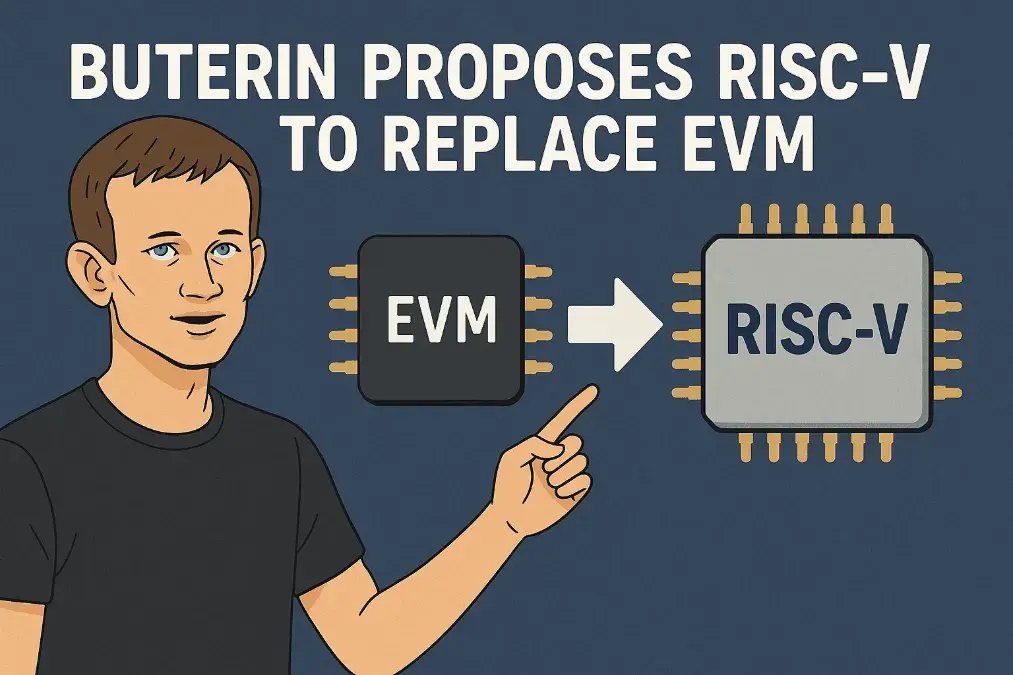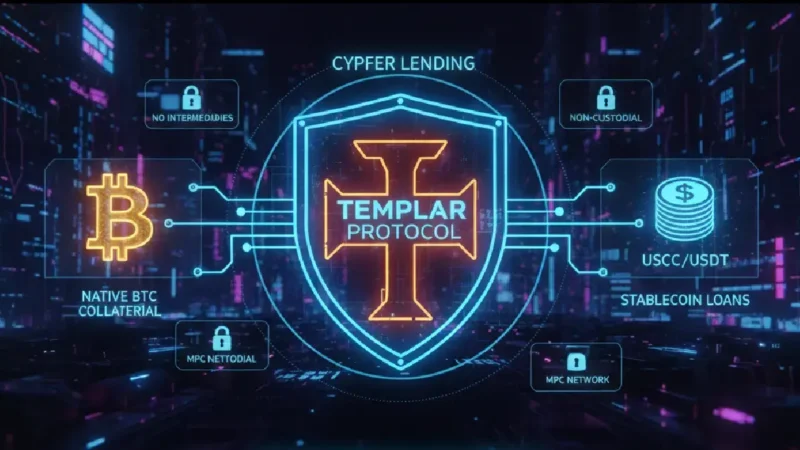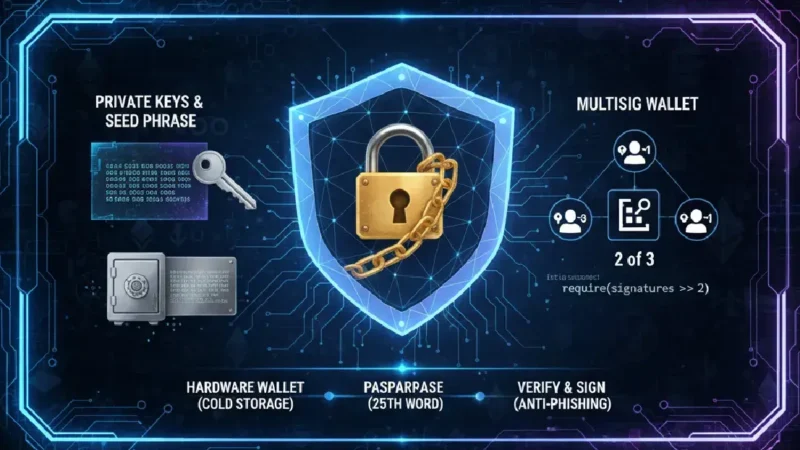Ethereum Revolution? Buterin Proposes RISC-V to Replace EVM

CryptoQuorum
A potentially seismic shift is being considered within the Ethereum ecosystem, one that could redefine the very engine powering its smart contracts. Ethereum co-founder Vitalik Buterin has put forth a compelling proposal to replace the long-standing Ethereum Virtual Machine (EVM) with RISC-V as the primary virtual machine language. This ambitious undertaking aims to tackle the persistent challenges of efficiency and scalability that have long been focal points for the Ethereum community.
Preserving Core Principles, Revolutionizing Execution
While the foundational pillars of Ethereum, namely accounts and storage, are envisioned to remain intact, the transition to RISC-V promises a significant overhaul of the execution layer. Buterin argues that this fundamental change could streamline the complex processes involved in executing smart contracts, thereby alleviating critical bottlenecks that currently hinder Ethereum’s ability to scale effectively.
RISC-V Syscalls: A Path to Enhanced Performance
The core of the proposal lies in the substitution of the EVM’s traditional opcode system with RISC-V syscalls. This shift, according to Buterin, holds the key to unlocking substantial performance improvements across various critical operations. Areas such as state root computation, a computationally intensive process crucial for maintaining the integrity of the Ethereum state, and overall block execution are anticipated to experience notable acceleration.
Potential for 100x Efficiency Gains
The potential efficiency gains touted by Buterin are nothing short of revolutionary. He suggests that the move to RISC-V could lead to performance enhancements exceeding a staggering 100 times in certain scenarios. A particularly promising area for these gains lies in the optimization of the proving process for zero-knowledge Ethereum Virtual Machines (ZK-EVMs). ZK-EVMs, which aim to enhance both privacy and scalability by leveraging zero-knowledge proofs, are currently hampered by the computational demands of EVM-based proving. By adopting RISC-V, the intricate mathematical operations involved in generating and verifying these proofs could be significantly expedited, paving the way for more efficient and practical ZK-EVM implementations.
Strategies for Implementing the Transition
The proposal acknowledges the magnitude of such a transition and outlines several potential implementation strategies to navigate the complexities involved. One crucial aspect is ensuring backward compatibility, allowing the vast ecosystem of existing EVM-based smart contracts to continue functioning seamlessly. To achieve this, the proposal suggests the possibility of supporting dual virtual machines, where both the EVM and RISC-V operate in parallel for a transitional period.
Converting EVM Contracts to RISC-V
Another potential avenue explored is the conversion of existing EVM contracts to run on a RISC-V interpreter. While this approach presents its own set of technical challenges, it could offer a more integrated long-term solution, allowing the entire Ethereum ecosystem to eventually benefit from the performance advantages of RISC-V. The specifics of this conversion process, including the tools and methodologies involved, would undoubtedly be a critical area of research and development.
Simplifying the Execution Layer for Scalability
Buterin emphasizes that this radical shift is not merely about incremental improvements; it is a fundamental step necessary to simplify the intricate execution layer of Ethereum. The current complexity of the EVM has been identified as a contributing factor to the challenges in scaling the network and developing more efficient execution environments. By embracing the more streamlined and modern architecture of RISC-V, Ethereum could potentially shed some of this complexity, leading to a more robust and scalable foundation for future growth.
Broader Implications: Lower Fees and New dApp Possibilities
The implications of such a transition extend far beyond mere performance metrics. A more efficient execution layer could translate to lower gas fees for users, making the Ethereum network more accessible and affordable. It could also unlock new possibilities for decentralized applications (dApps) that are currently constrained by the computational limitations of the EVM. Complex computations and data-intensive applications could become more feasible, fostering innovation and expanding the potential use cases of the Ethereum blockchain.
Enhancing the Developer Experience
Furthermore, the adoption of RISC-V could have significant implications for the developer experience. RISC-V boasts a more modern and widely understood instruction set architecture compared to the EVM’s bytecode. This could potentially lower the barrier to entry for developers, attracting a broader pool of talent to the Ethereum ecosystem and fostering a more vibrant and active developer community. The availability of more standard and mature tooling for RISC-V development could also streamline the smart contract development process.
Navigating the Challenges of a Major Transition
However, such a monumental undertaking is not without its challenges. The transition from the EVM to RISC-V would be a complex and potentially disruptive process. Ensuring the security and reliability of the new virtual machine would be paramount, requiring rigorous testing and auditing. The migration of existing infrastructure and the education of developers would also be significant hurdles to overcome.
Community Engagement and Future Research
The Ethereum community would need to engage in extensive discussions and research to thoroughly evaluate the feasibility and potential risks associated with this proposal. The technical complexities of implementing dual VM support or EVM-to-RISC-V contract conversion would need careful consideration. The long-term implications for the Ethereum ecosystem and its compatibility with existing standards and tools would also need to be thoroughly assessed.
Potential Rewards: A More Scalable Ethereum
Despite these challenges, the potential rewards of a successful transition to RISC-V are substantial. The promise of significantly enhanced efficiency and scalability could be a game-changer for Ethereum, positioning it as a more robust and competitive platform for decentralized applications in the years to come. The optimization of ZK-EVMs, in particular, could unlock a new era of privacy-preserving and scalable applications on the Ethereum network.
Stay informed, read the latest crypto news in real time!
Conclusion: A Bold Vision for Ethereum’s Future
The proposal by Vitalik Buterin marks a bold and ambitious vision for the future of Ethereum’s execution layer. The potential replacement of the EVM with RISC-V represents a fundamental re-evaluation of how smart contracts are executed on the blockchain. While the path forward is undoubtedly complex and requires careful consideration, the potential benefits in terms of efficiency, scalability, and developer experience make this a conversation of critical importance for the entire Ethereum ecosystem. The coming months and years will likely see significant research and discussion surrounding this proposal, ultimately shaping the future trajectory of the world’s second-largest cryptocurrency. The prospect of a 100-fold increase in efficiency through the adoption of RISC-V is a compelling one, and the Ethereum community will be watching closely as this idea progresses. The long-term scalability goals of Ethereum may very well hinge on the successful exploration and potential implementation of this transformative proposal centered around RISC-V.




One thought on “Ethereum Revolution? Buterin Proposes RISC-V to Replace EVM”